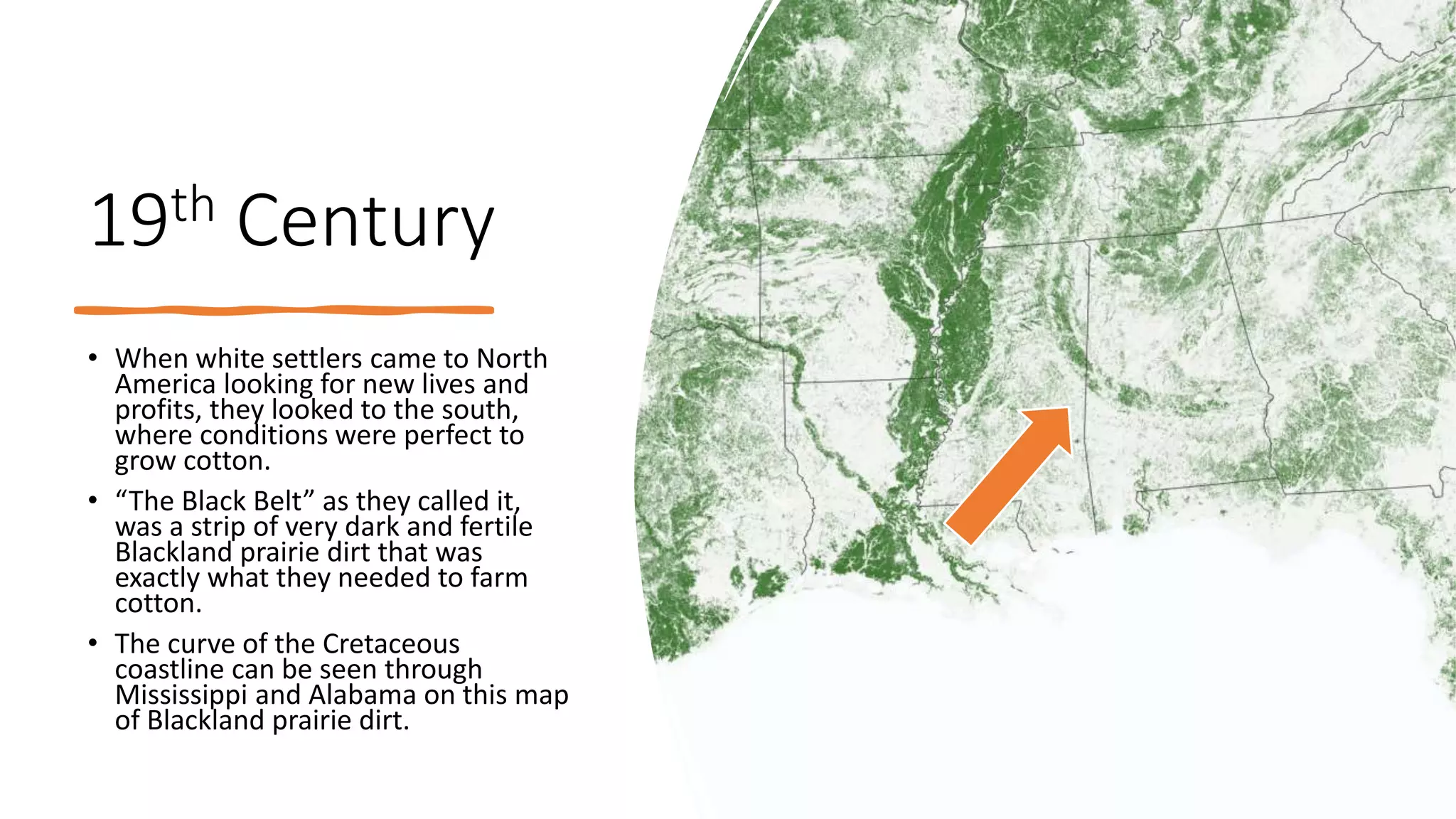The document discusses how the coastline of North America during the Cretaceous Period 80 million years ago, with a Western Interior Seaway dividing the continent, still influences patterns today. It notes that the fertile soil deposited along this ancient coastline attracted slave plantations, and after emancipation the populations remained high in African Americans. As a result, modern voting patterns follow the same curve as the long-gone Cretaceous coastline, with counties with larger African American populations voting predominantly Democrat.







